BA (HONS) IN INTERIOR ARCHITECTURE I MARCH - JUNE 2023
SCHOOL OF ARCHITECTURE BUILDING AND DESIGN (SABD)
AMINATH LYNN HANEEF 0329035 A R C 6 0 8 0 8 A D V A N C E D I N T E R I O R A R C H I T E C T U R E D E S I G N I I
P O R T F O L I O
This portfolio showcases the work produced over the course of the final year (Sem 06 to Sem 07) as well as the final curated media for exhibition and my own reflection on my project's strengths and weaknesses that I was able to see with the feedback of the lecturers, peers, and reviewers.
Assignment 1 aims to develop a specific point of view on a site by selecting people, things, and historical accounts.
TECHNICAL DRAWINGS
Students organize problem data into tailored design outcomes, divided into technical drawings and design development phases.
NARRATIVE 03 EXHIBITION CURATION 05
The final virtual exhibition production phase requires synergy between teams for curation and ideation. It focuses on production, dissemination, visual communication, and public accessibility. Students will present to an external jury for the final presentation.
CONTENT
Theory applied to experiential journey, exploring scale, intimacy, politics, behavior, and design expression through cinematic compositions..
APPARATUS DESIGN
A personal brief is crucial for project goals and development. Though some proposals may be hypothetical, solutions must be serious, demonstrating a design theme, logical structural systems, and spatial relationships.
REFLECTION
In order to express one's opinion on a topic, a reflection essay examines the ways in which a book, experience, or academic lecture affected their thoughts and opinions.

02 04 06
01
NARRATIVE
OBJECTIVE : Focusing on the development of a particular point of view towards a chosen interest within the context of the site is the main goal of Assignment 1. Assignment 1 asks the student to choose people, things, and historical accounts to create a narrative response to the location.
CARVERS OF PENANG
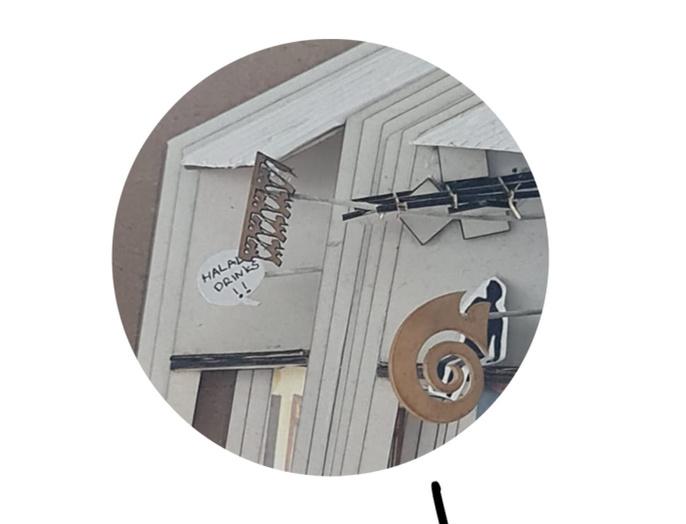
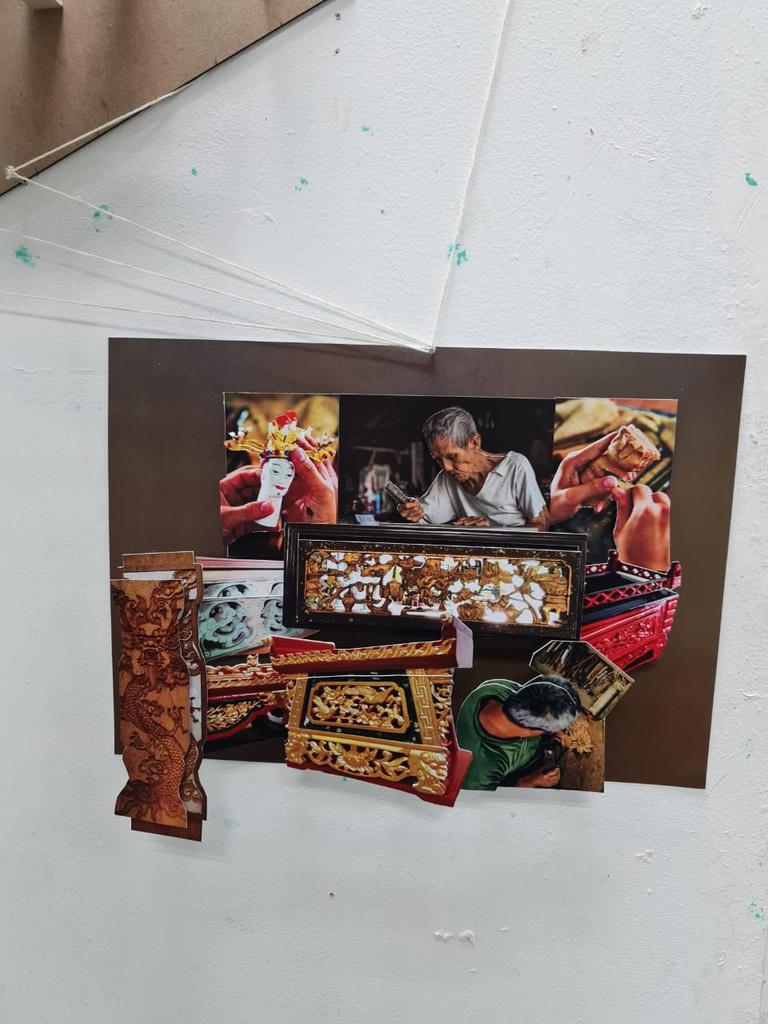
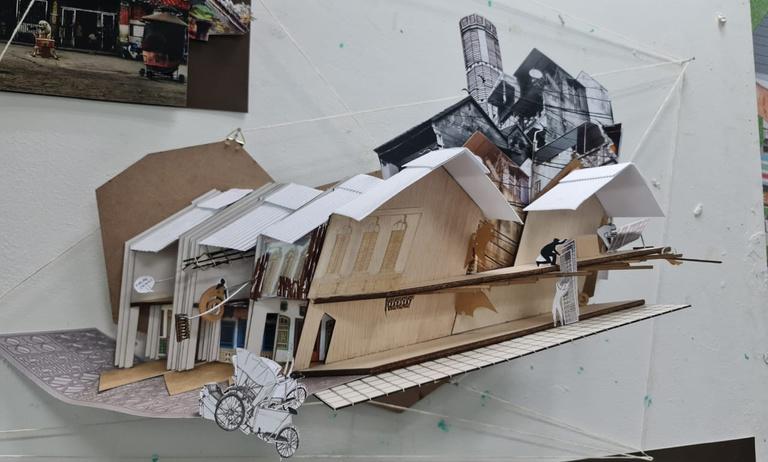


APPARATUS
OBJECTIVE : Through exploratory tools viewed through the prism of cinematic compositions (Nosferatu, Exit Through the Gift Shop, Wes Anderson, etc ), theory is applied to experiential journey development. Through a playful take on scale, intimacy, immensity, absurdity, politics, behaviour, habits, futurism, speculation, divergences, and peculiarities, it is developed in several angles and possibilities to rigourously question its impact on occupants This will be reflected in the mannerism of materiality, scale, and design expression played out in the development.
POISED EDNA
"TRANQUIL DRAGON"
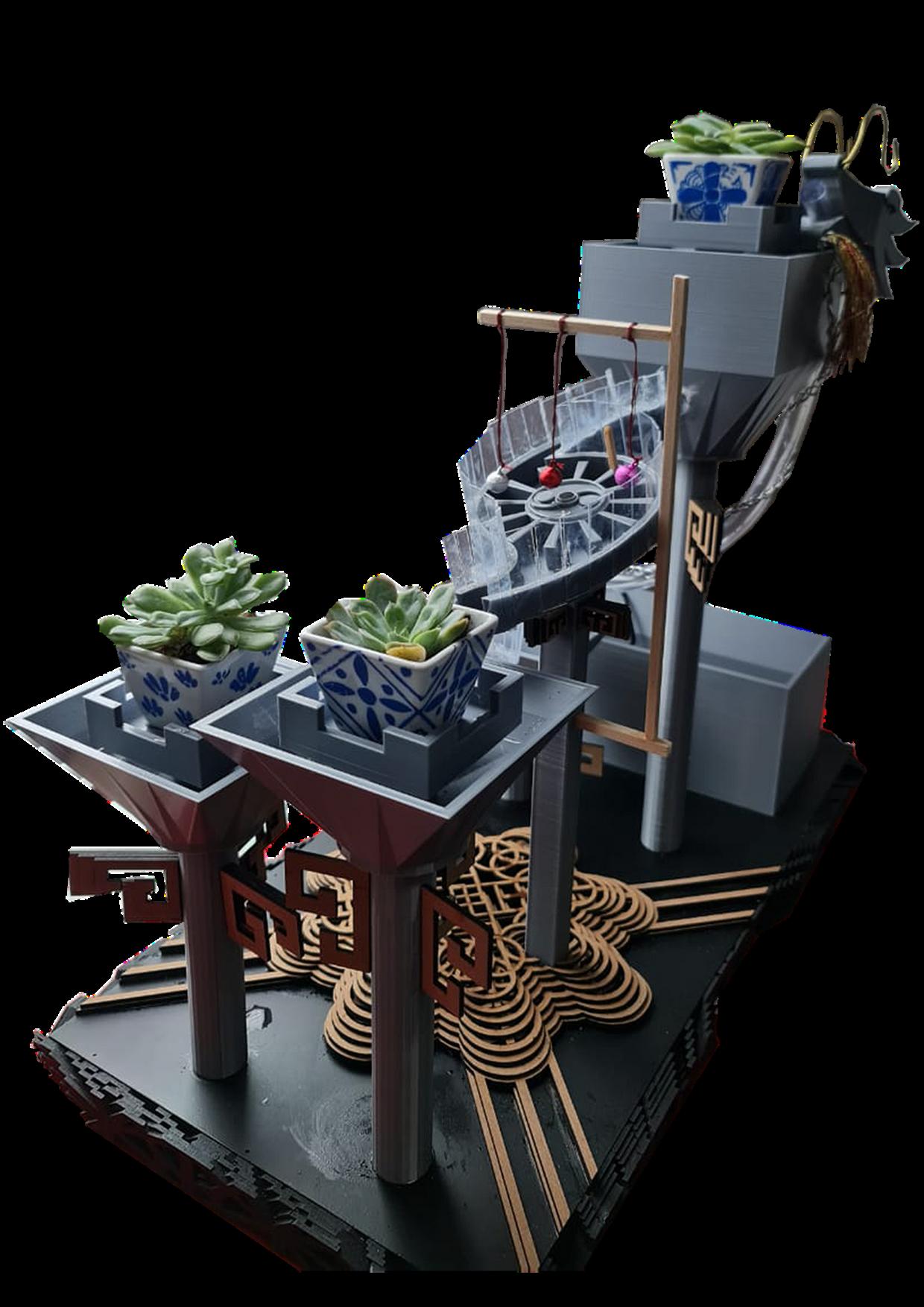
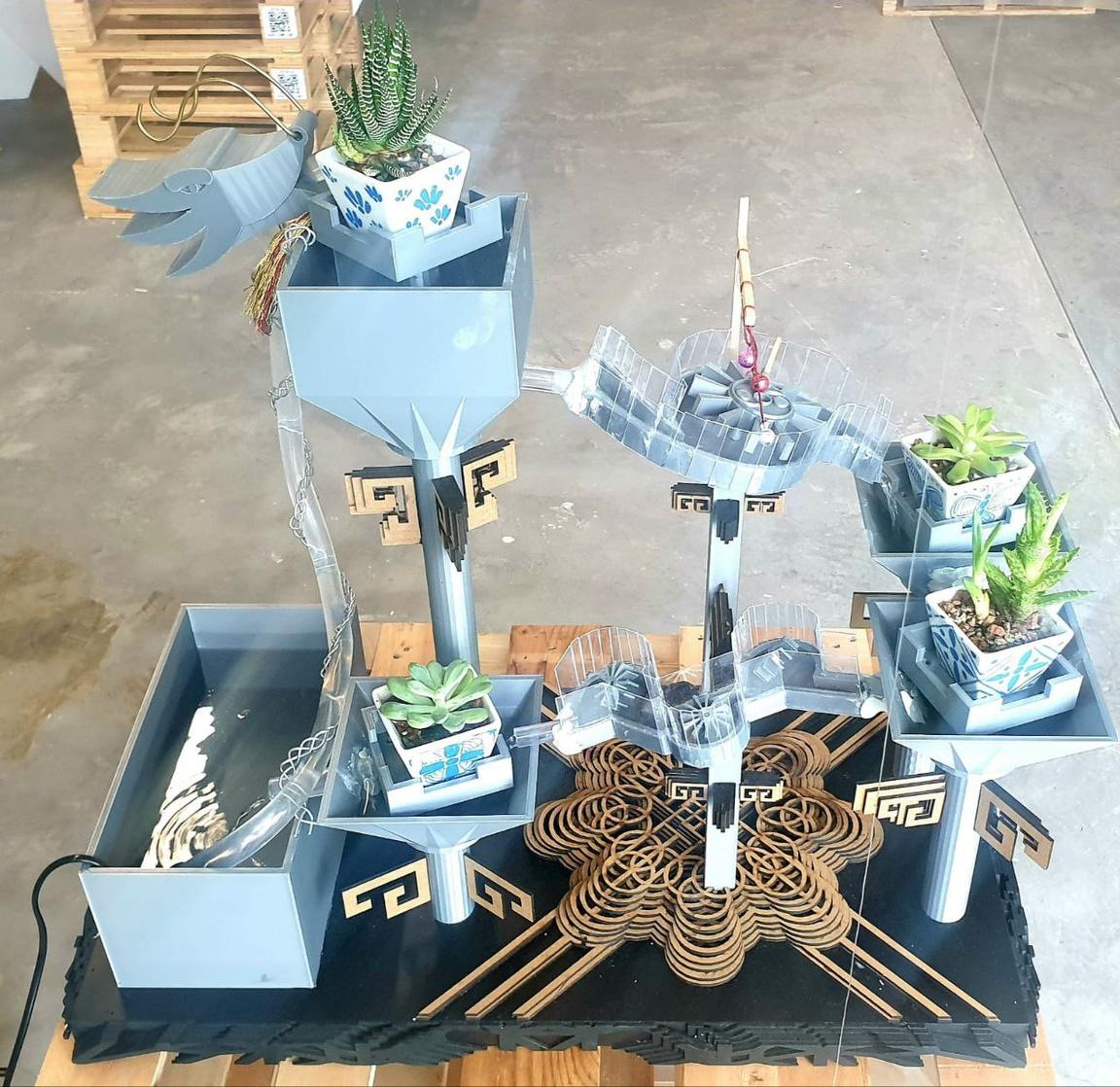


TECHNICAL DRAWINGS
OBJECTIVE : Students must be able to organise all of the problemrelated data they have gathered into a series of design outcomes that are tailored to the problem's resolution at this stage This phase is divided into two stages: the creation of technical drawings and the design development stage.
Weeks 3-5 of the first phase will be devoted to the development component, while Weeks 5–9 will be devoted to the creation of working drawings
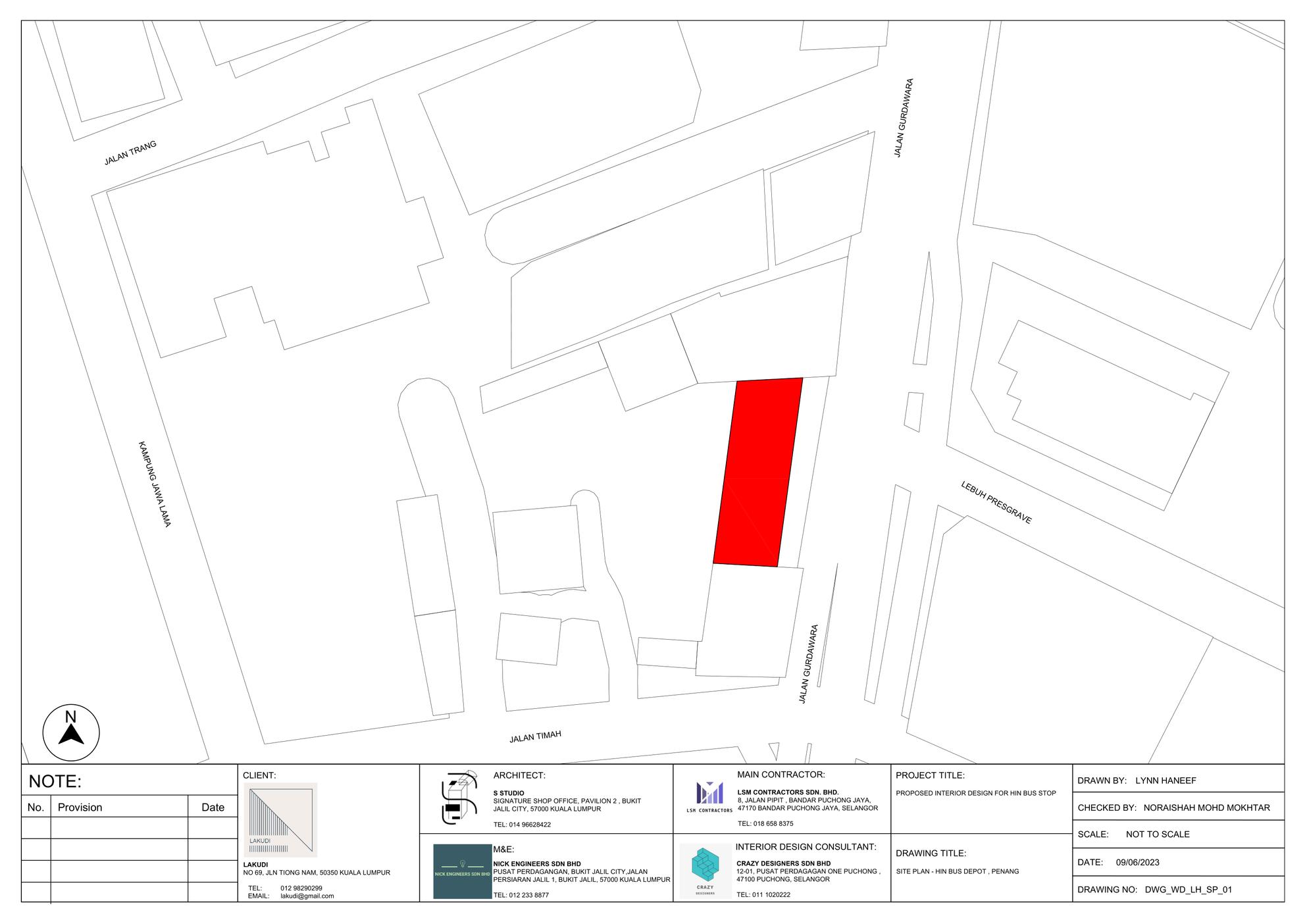
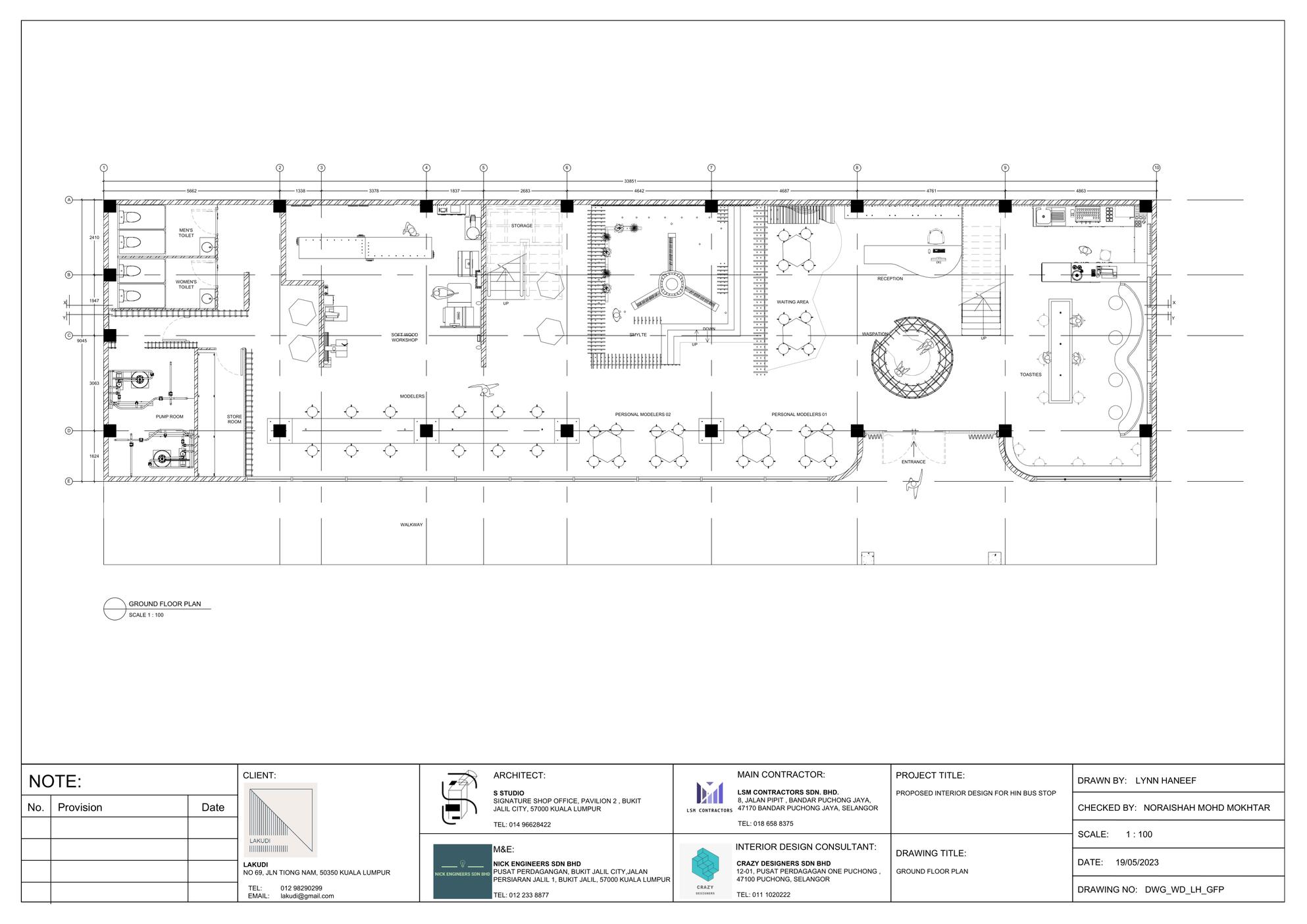



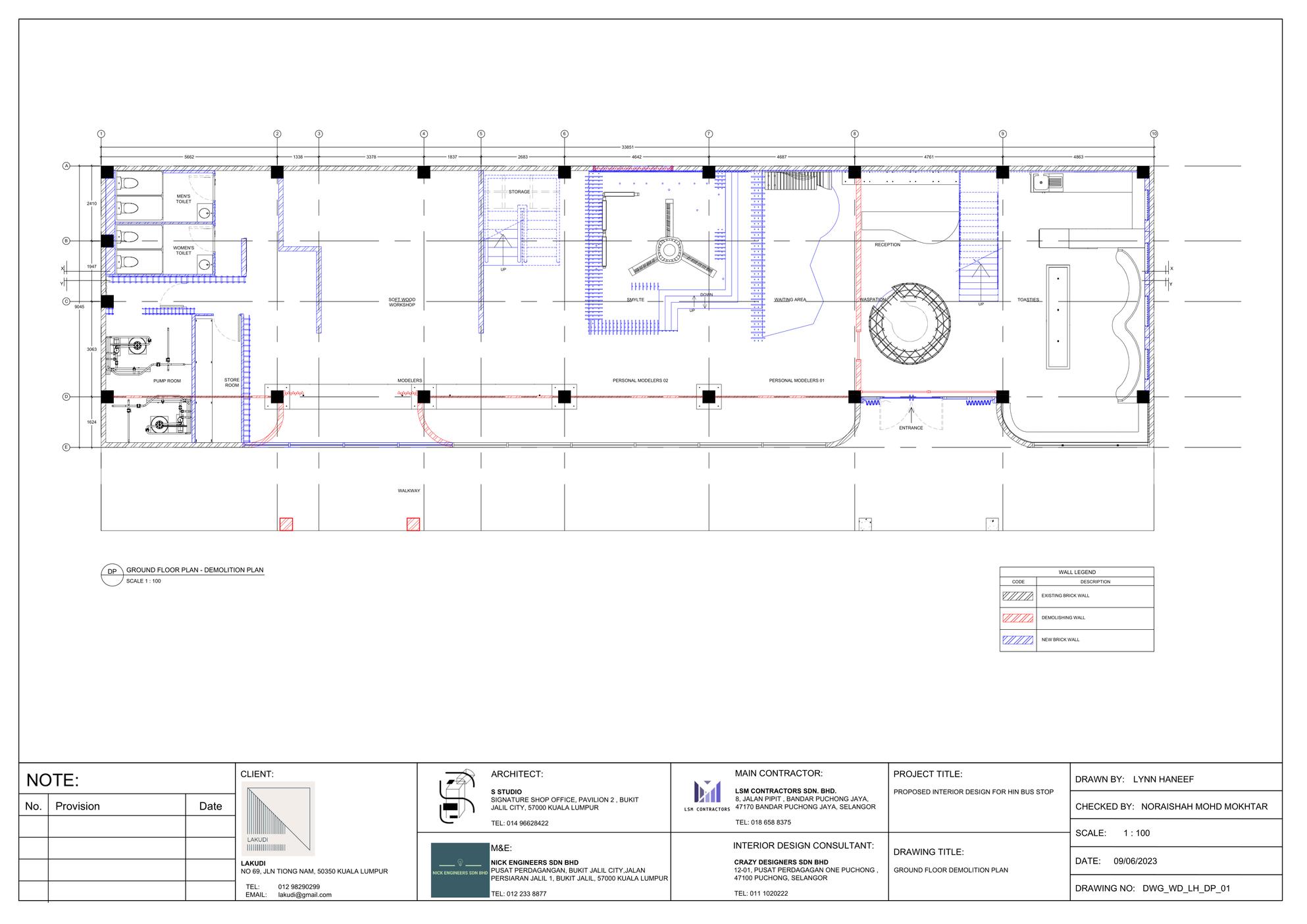



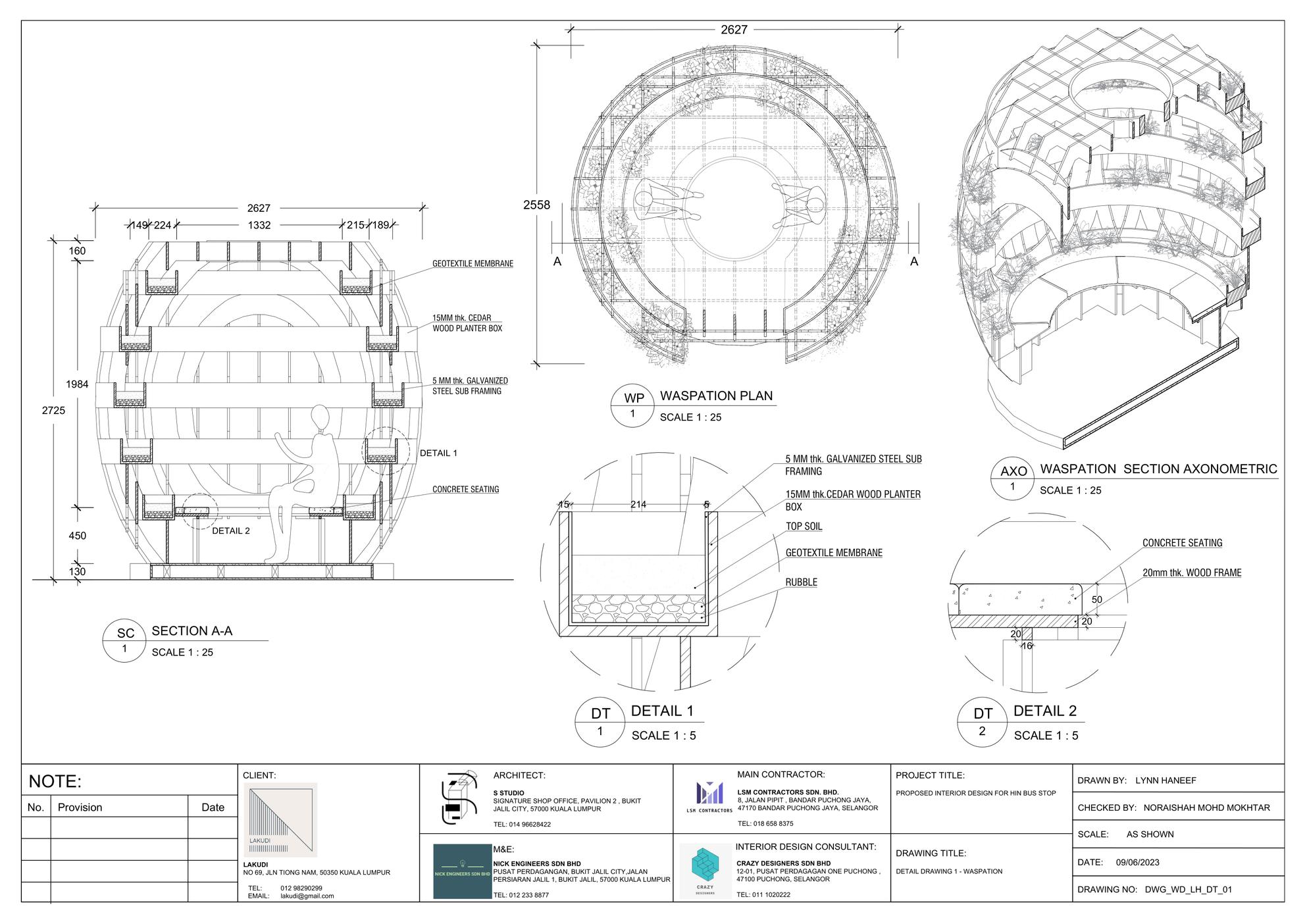
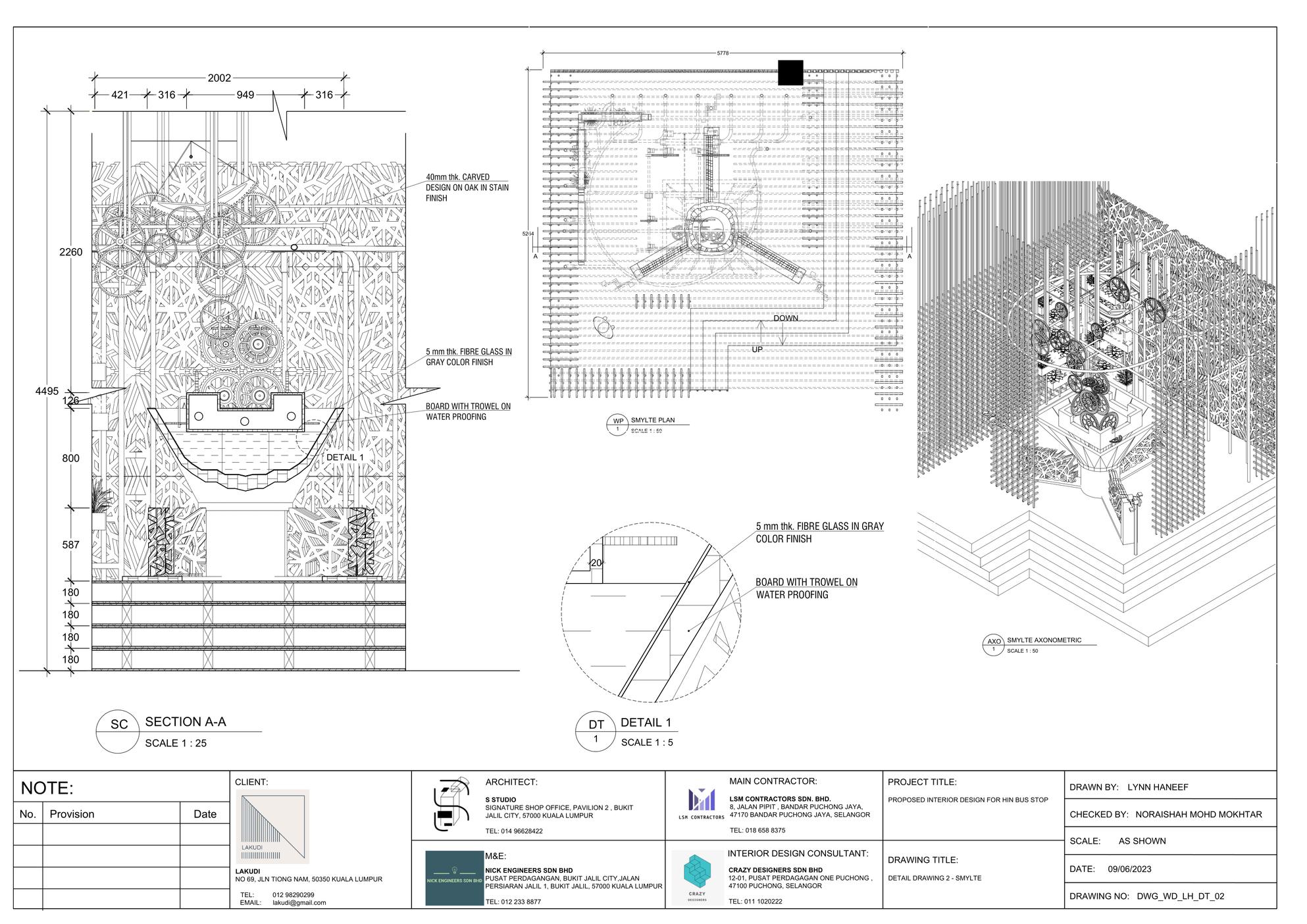
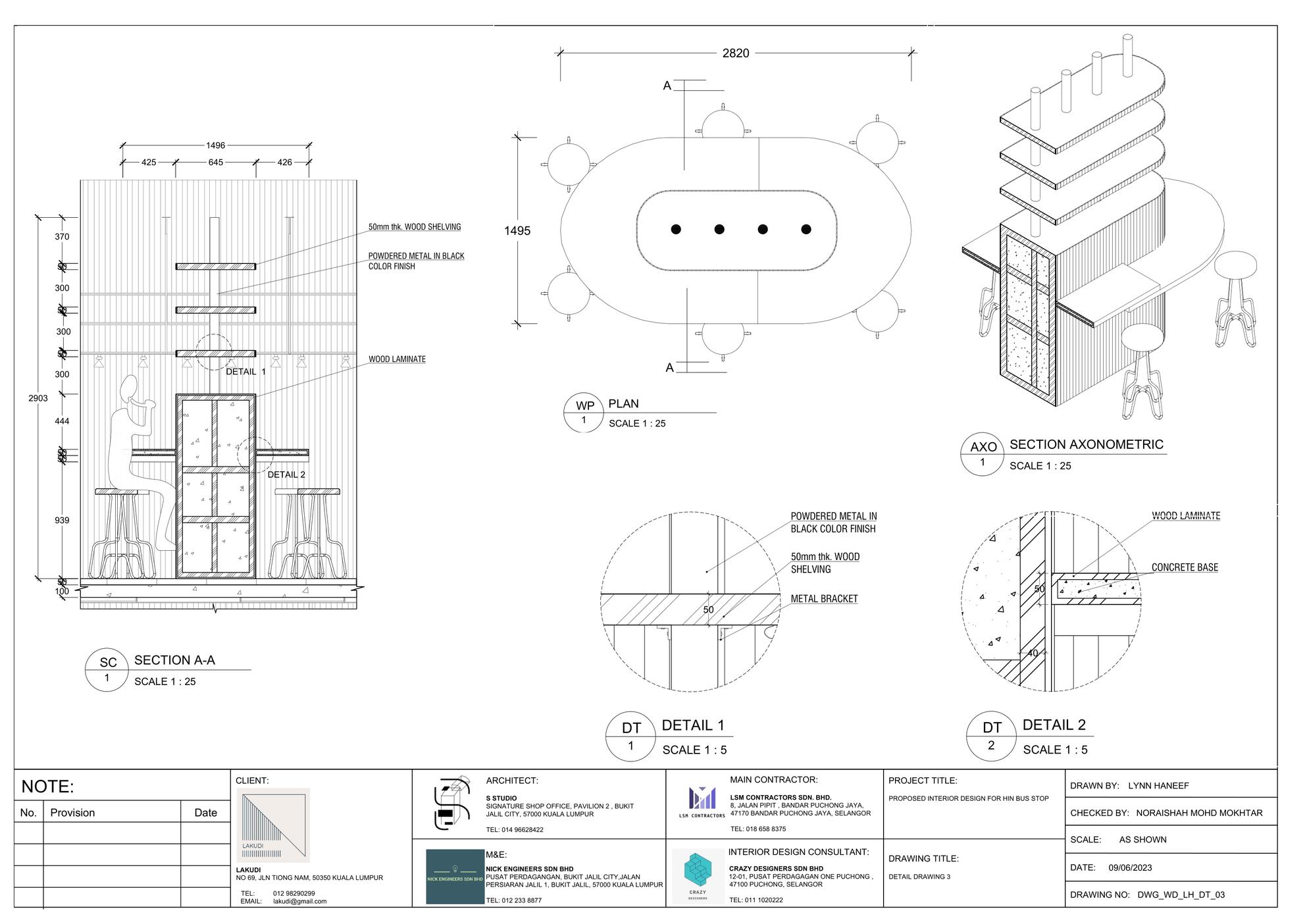
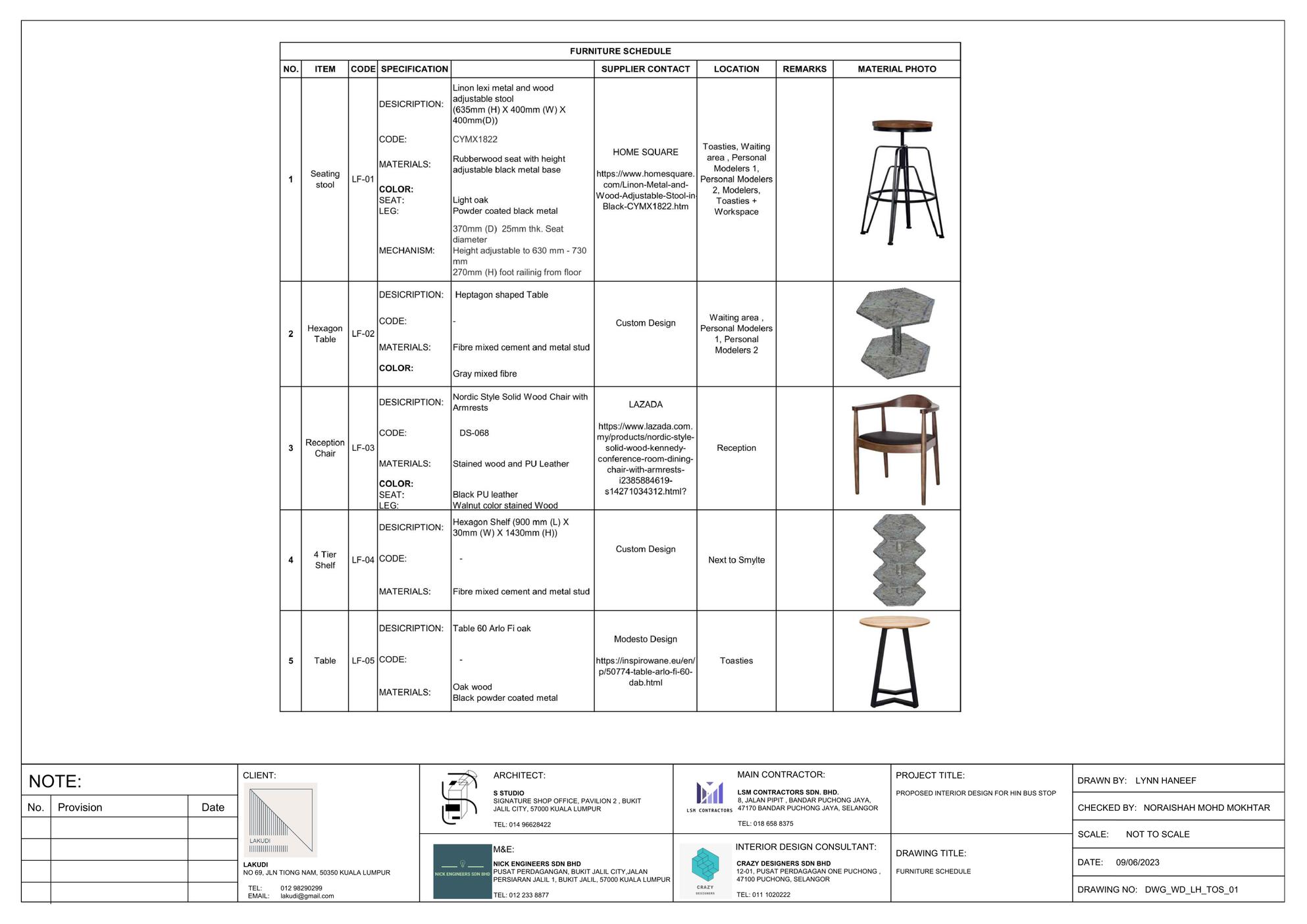

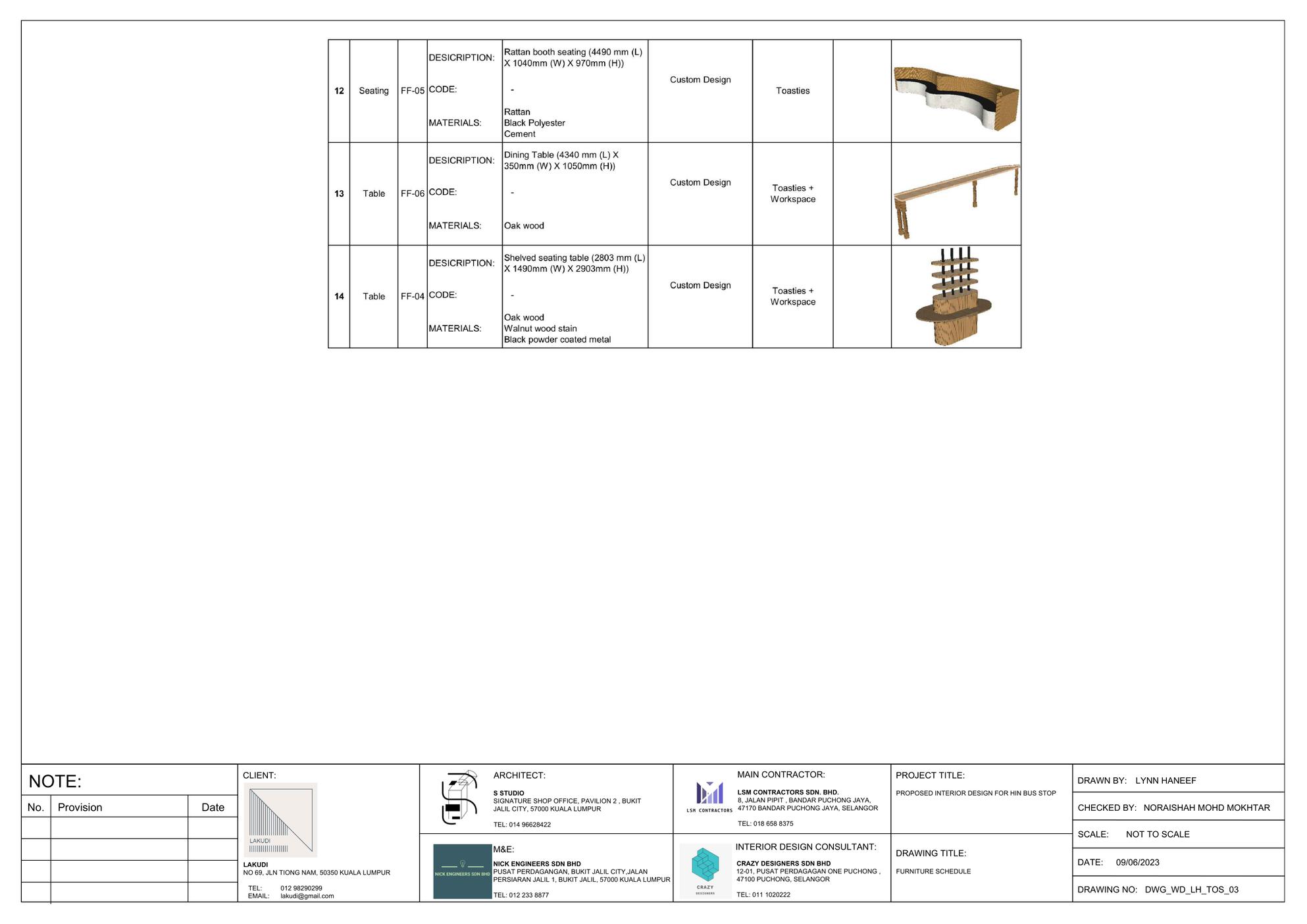
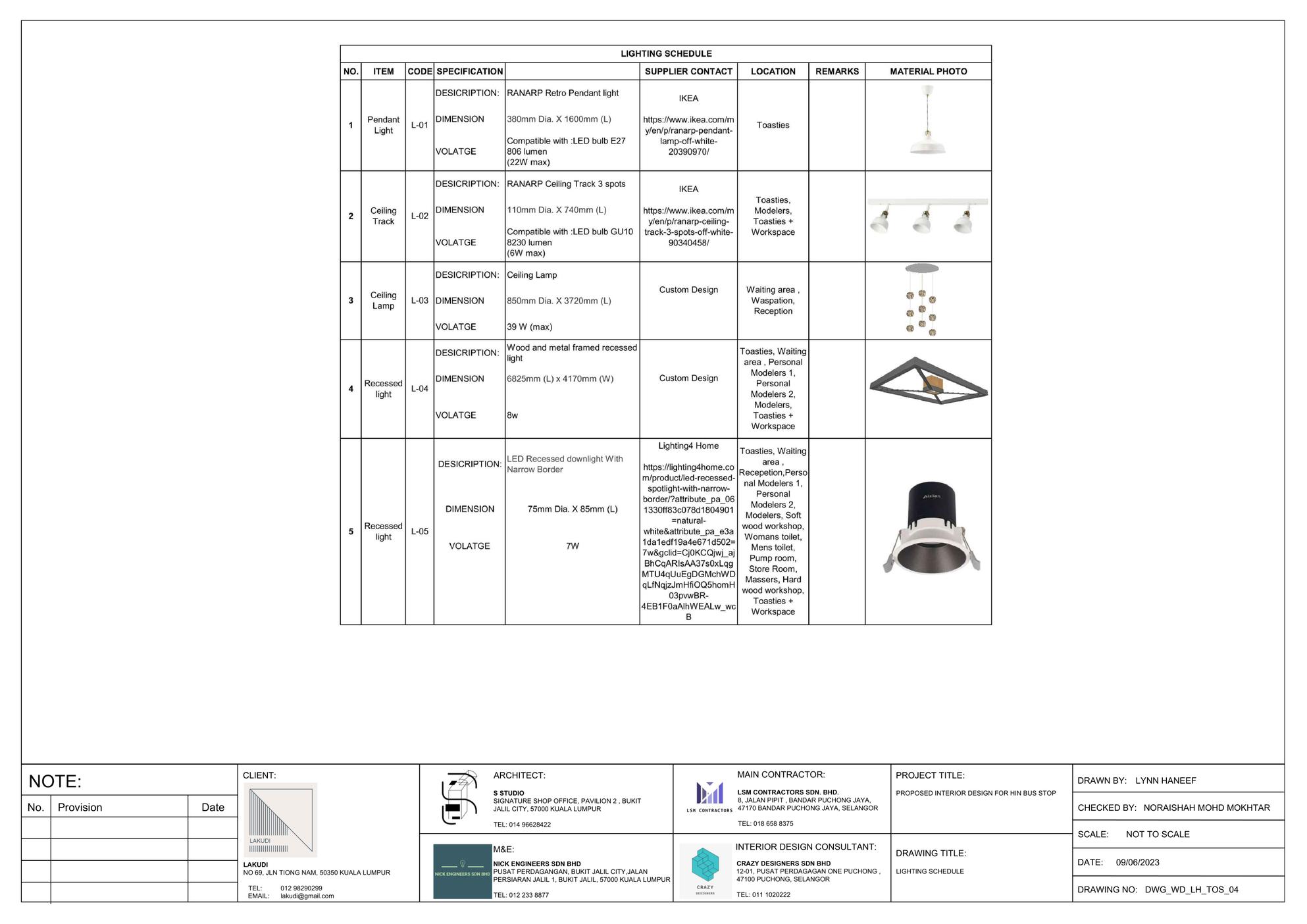
MATERIAL BOARD

DESIGN
OBJECTIVE : To achieve project objectives and develop the project, a personal brief must be submitted. Although some of the ideas are undoubtedly speculative, the solutions must reveal careful consideration in how they address the design problem. To demonstrate an appropriate design theme, logical structural systems, and the expression of spatial relationships, there should be clear intentions and objectives.
Lakudi is a creator hub promoting wood carving and craftsmanship among younger generations. It offers spaces for learning and resting, with biophilic design enhancing indoor well-being and generating extra income through selling or using plants in the crafting workshop.
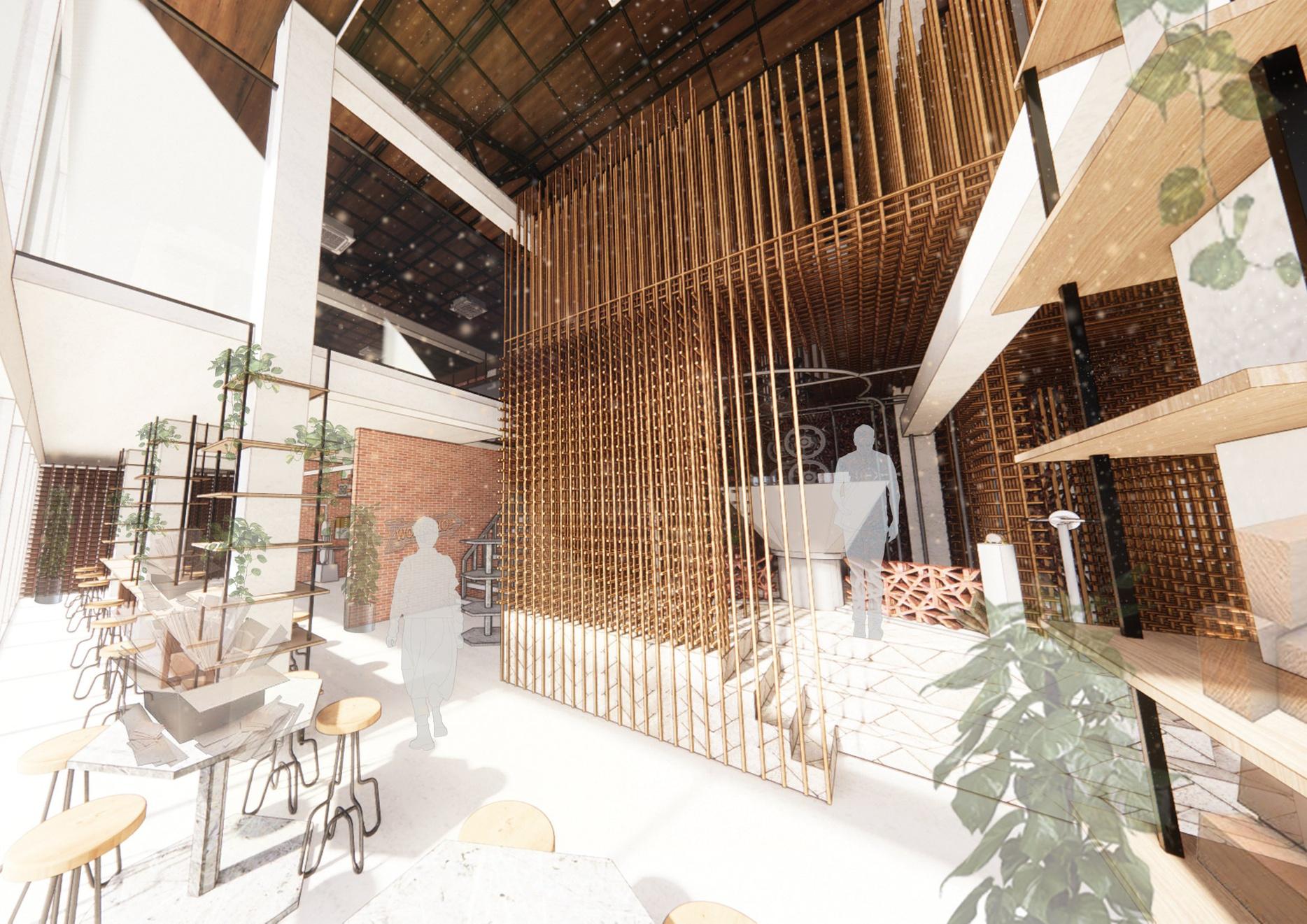
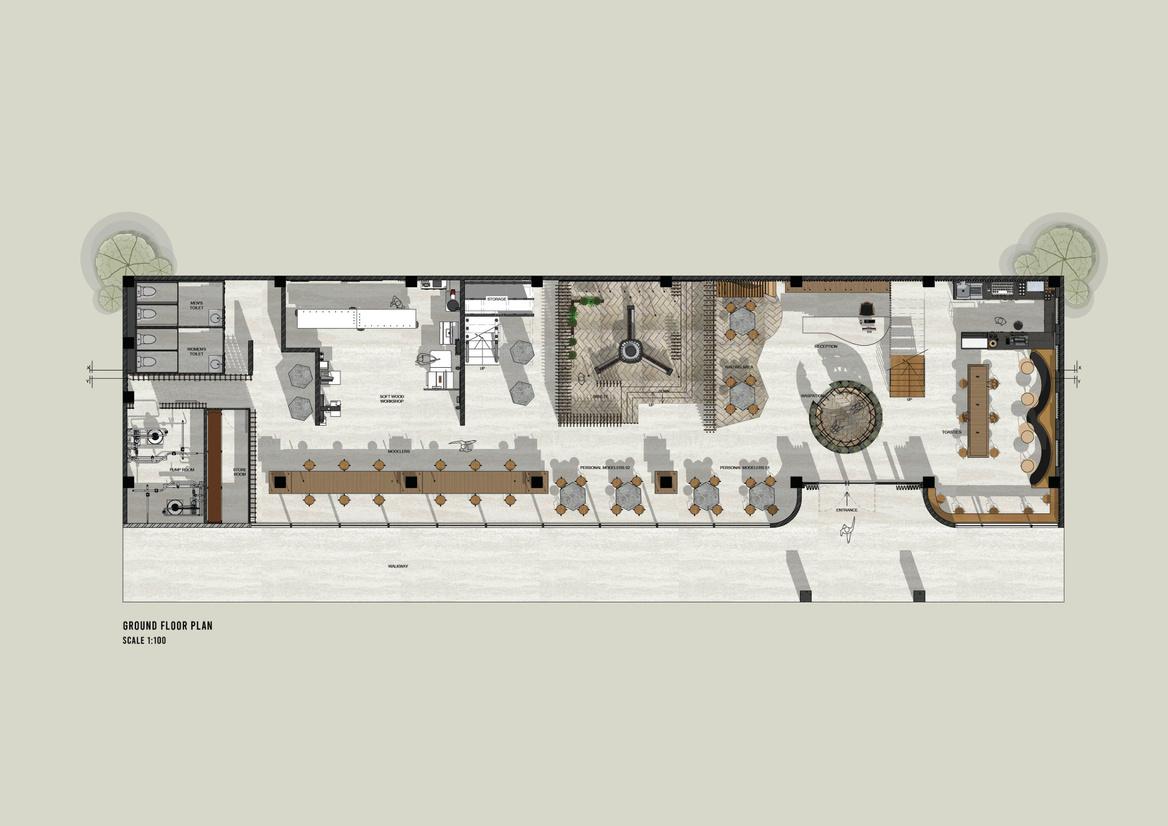

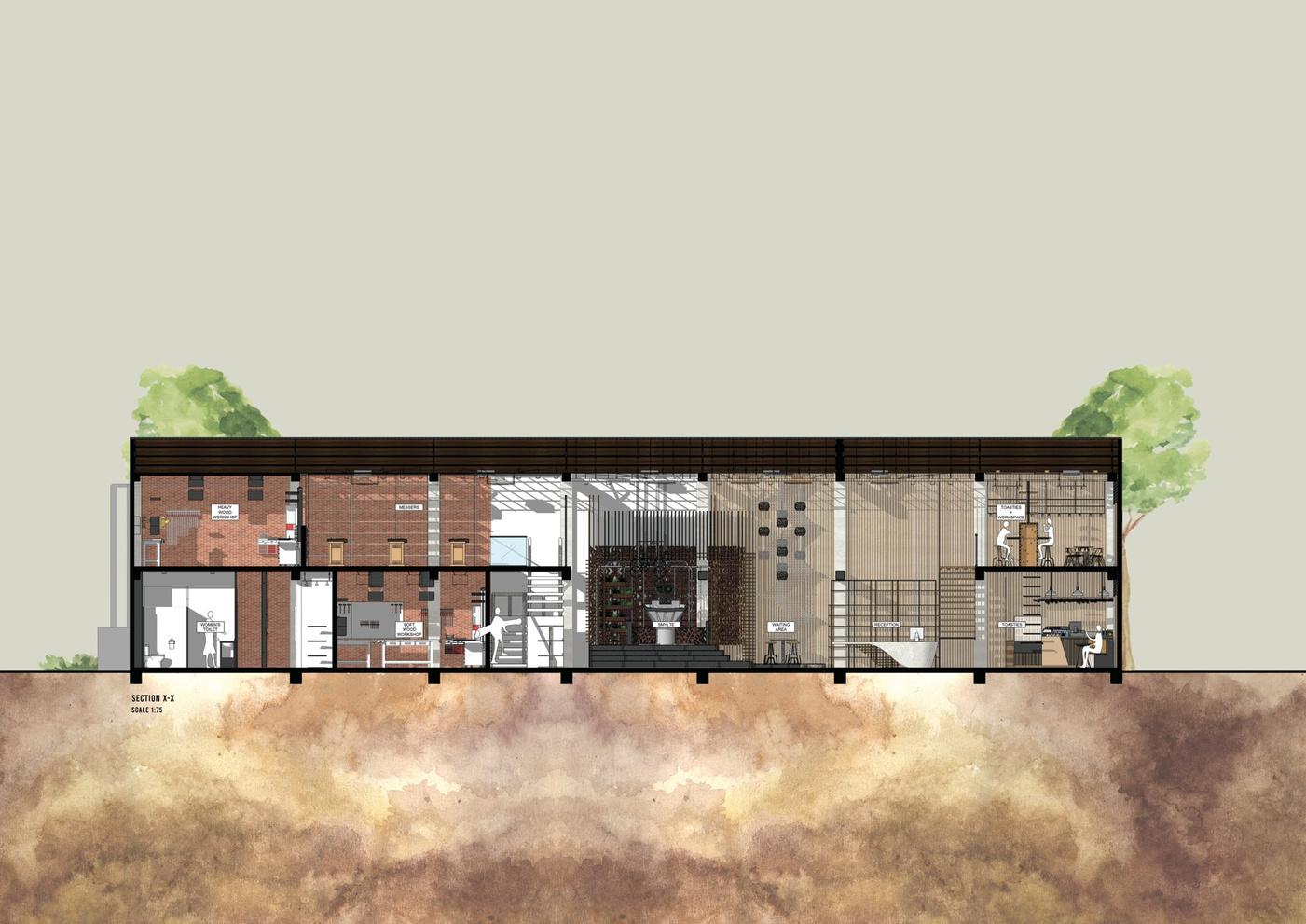
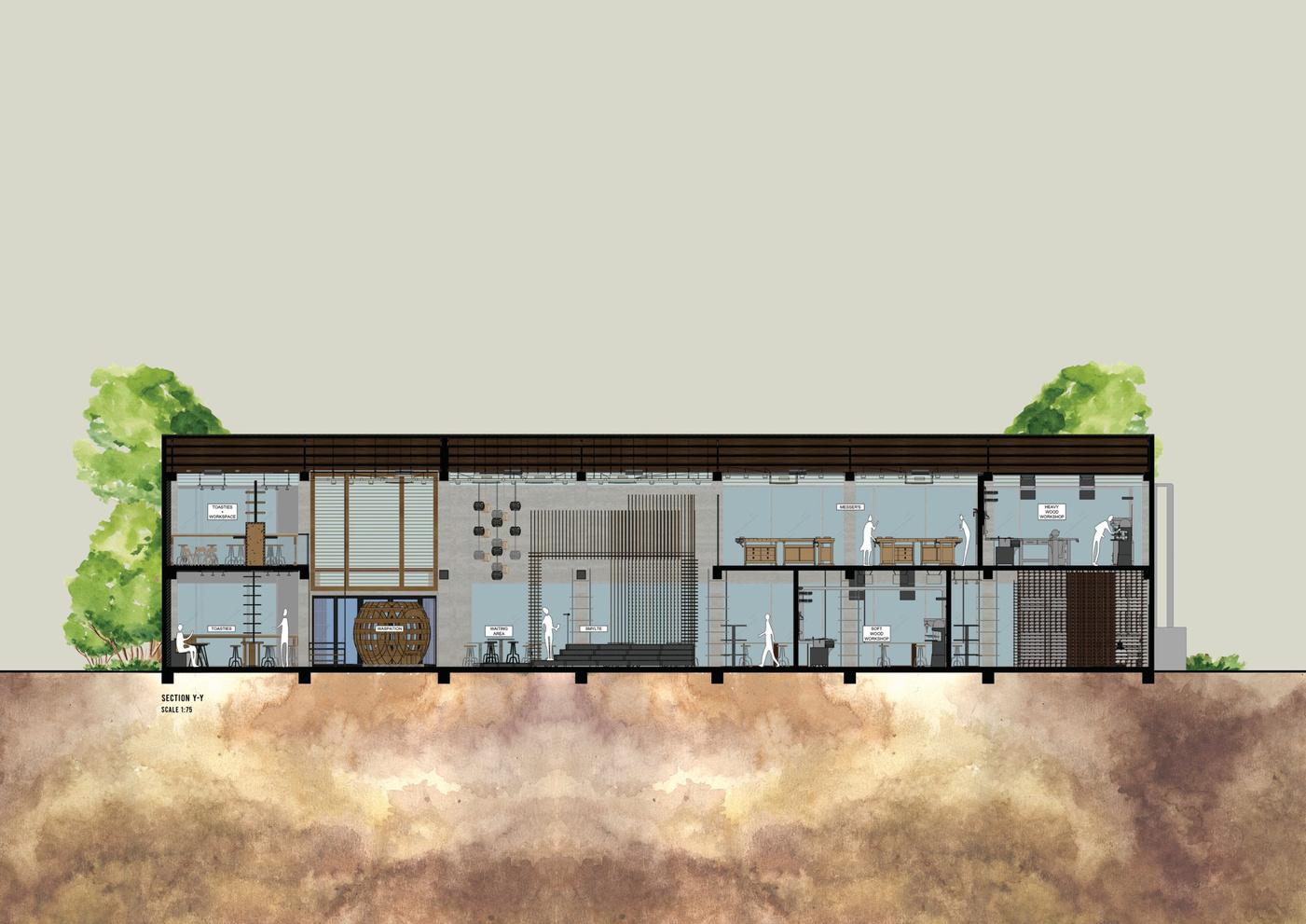
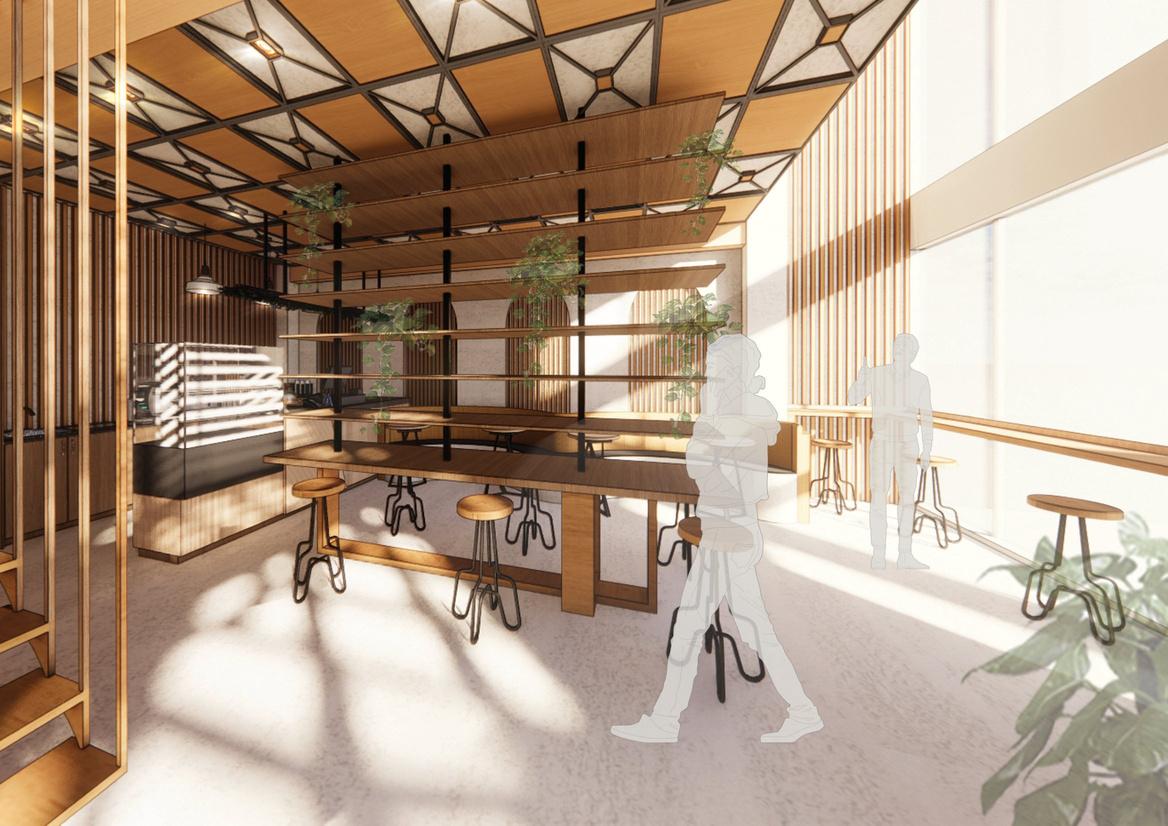
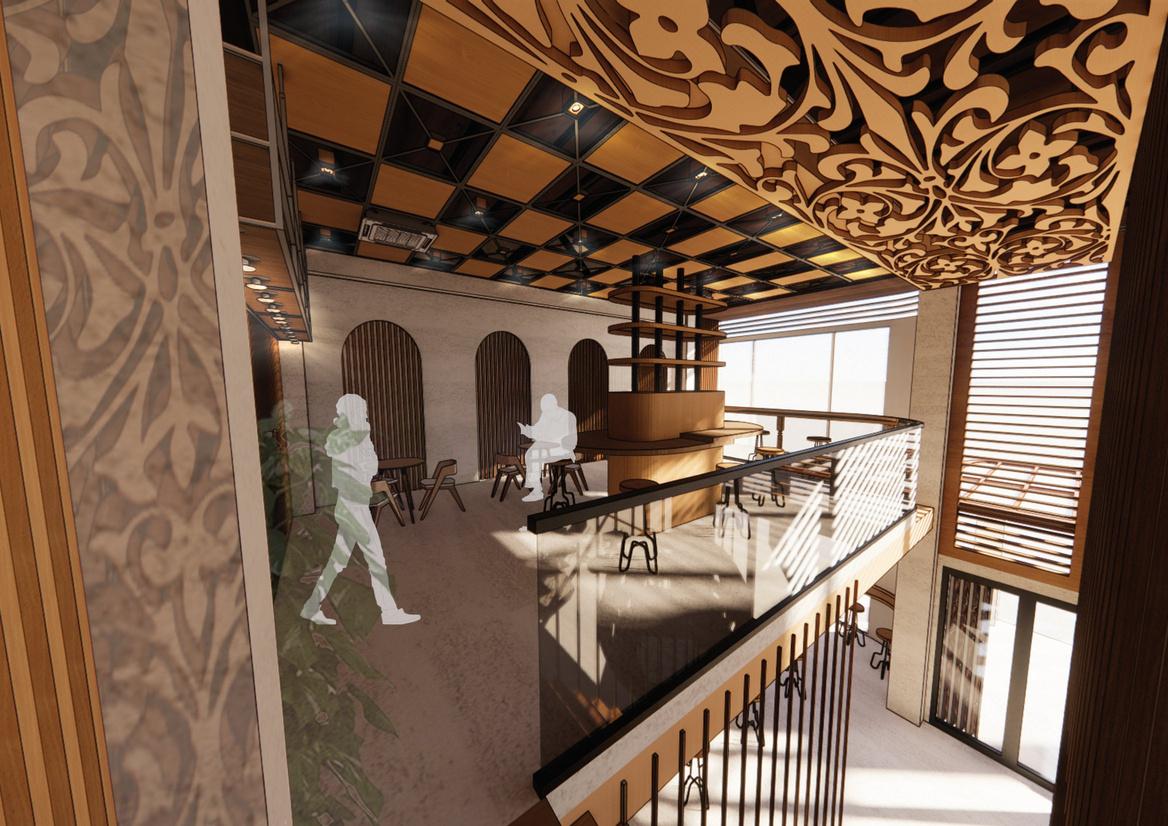
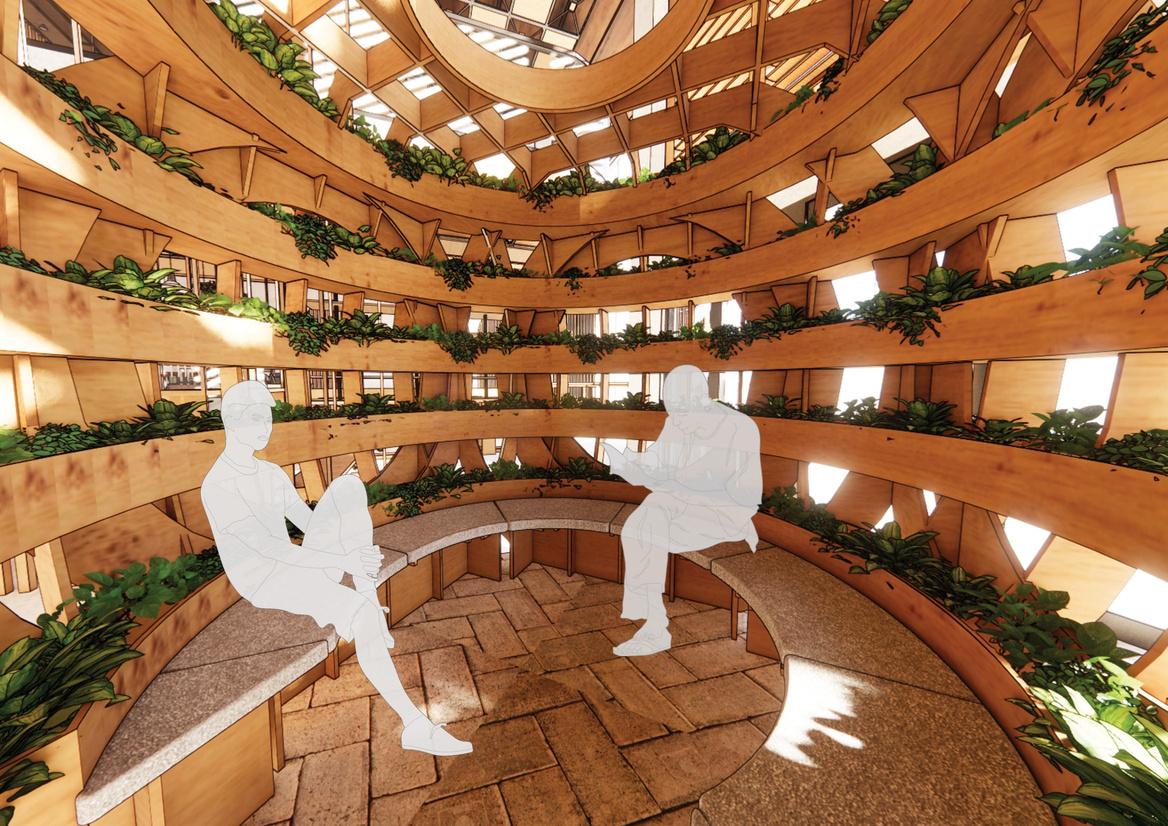
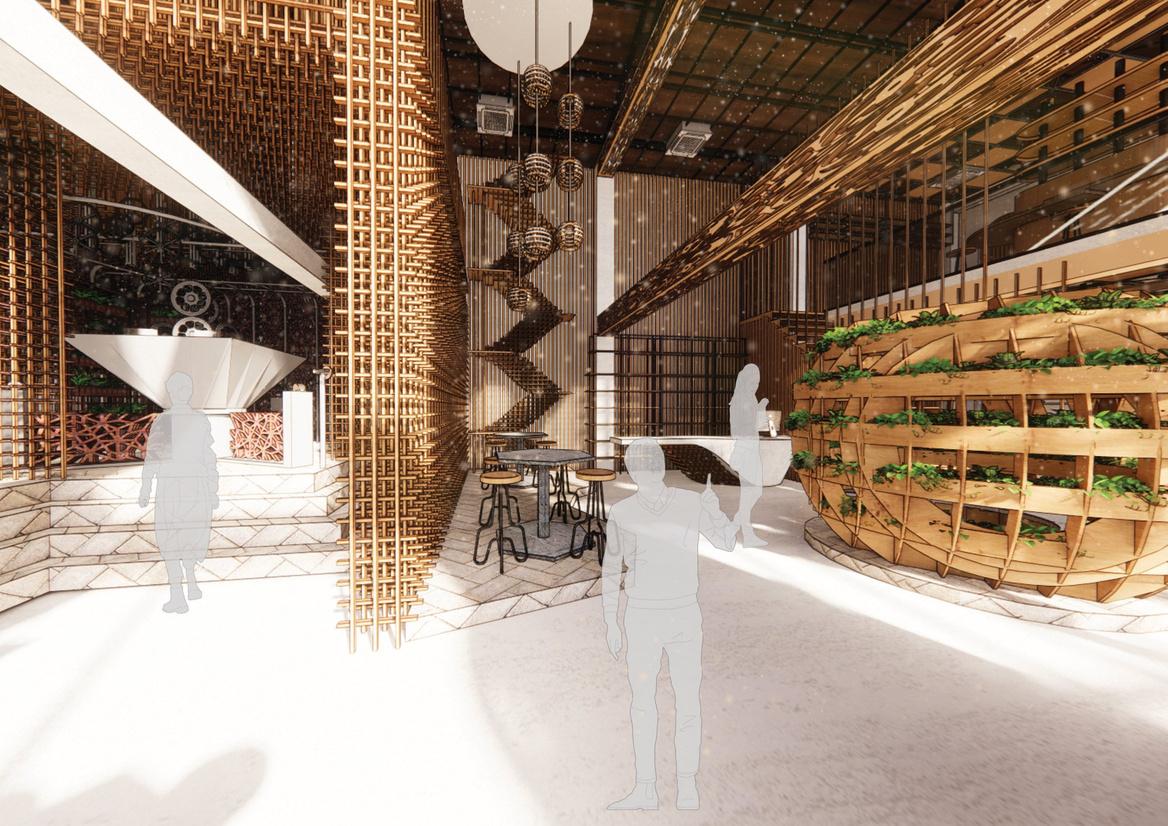

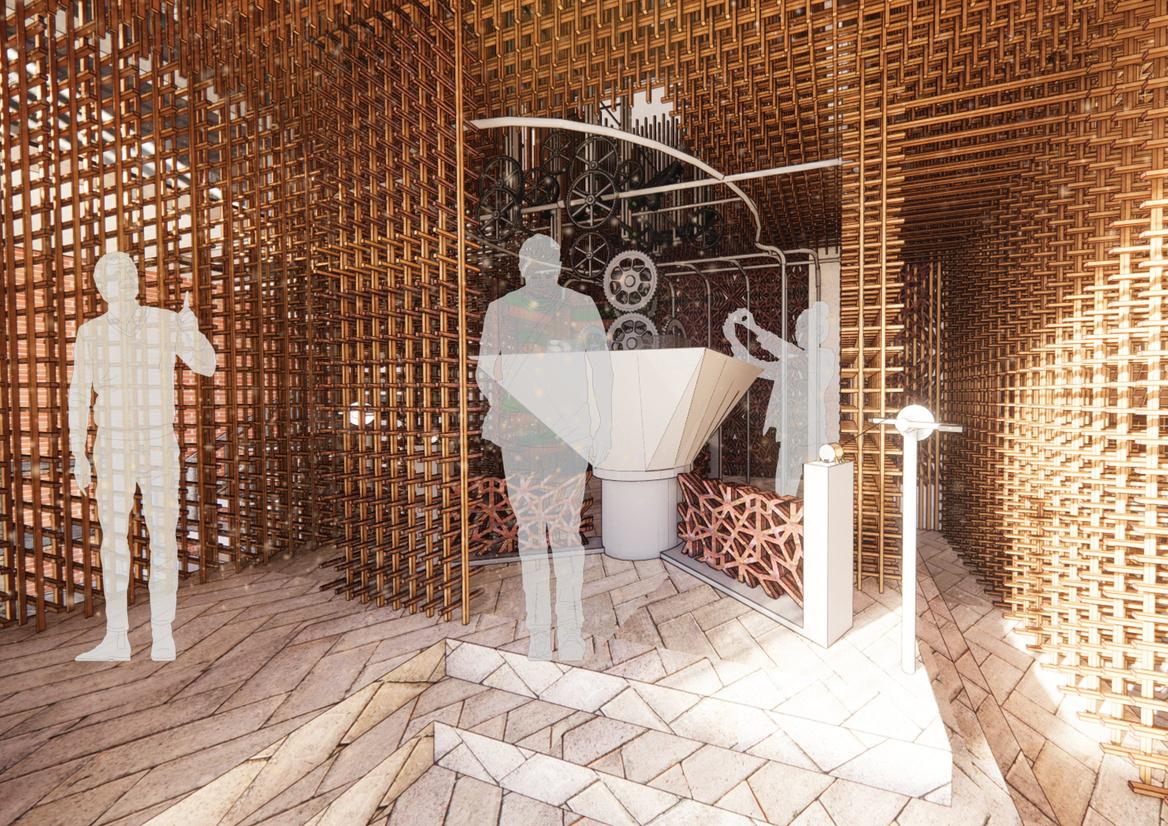
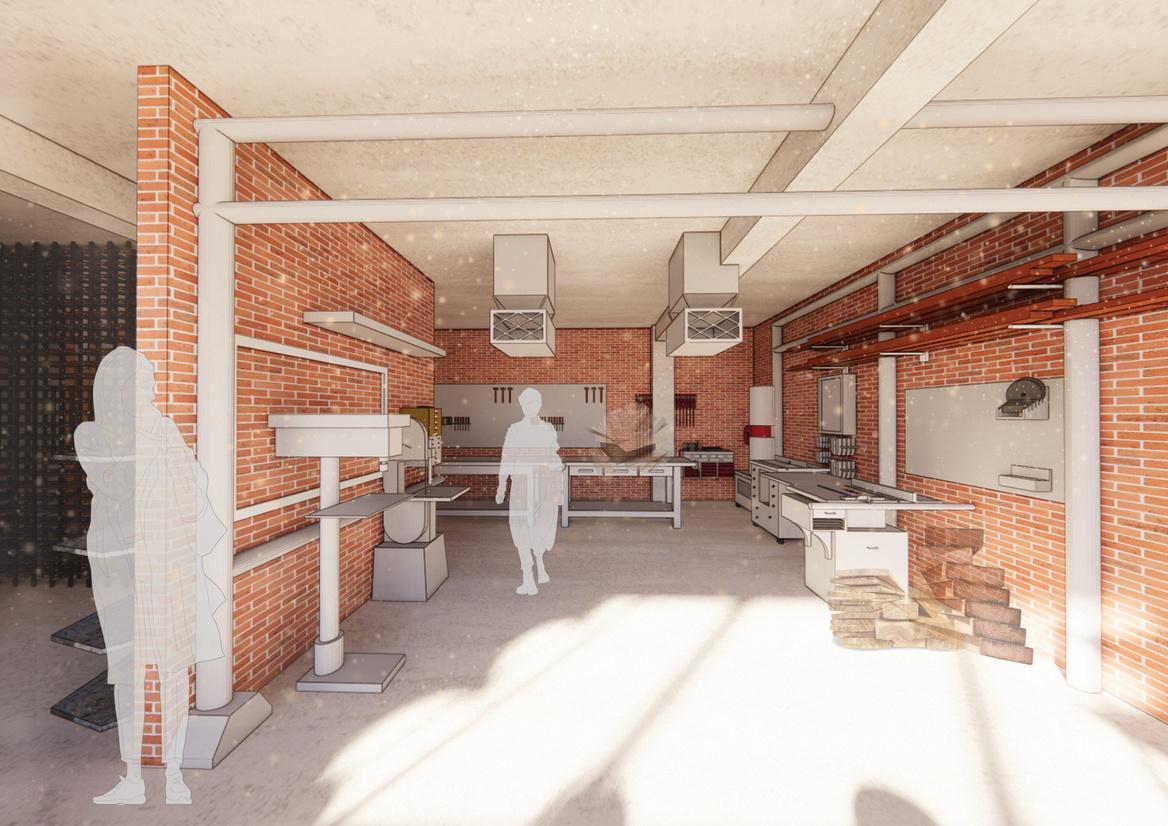

EXHIBITION CURATION
OBJECTIVE : The collaboration of several teams in terms of exhibition curation and ideation will be necessary to craft the design outcomes towards a final virtual exhibition production. By this stage, all design output and production have been finished, turned in, and are no longer in the development phase. This stage only focuses on creating the virtual exhibition; at this point, dissemination strategies should be thought of. Accessibility for the general public and effective visual communication should be taken into account during this stage of the project For the final presentation, the students will also be required to make a presentation to an outside jury
For the curative media, the final phase before exhibition, I had chosen to go with cutting with the help of laser cutting and 3D projection with layering. It was to show different perspectives and areas of my designed space.

OVER ALL REFLECTION
During the total 16 weeks (inclusive of the 14 weeks of the semester and the weeks leading to the exhibition) of this semester, I have learned to change and try new design styles and rendering styles. To step out of my comfort zone and try the broader aspects.
The works shown in this portfolio is from the Semester 6 and Semester 7, the works had expanded from the Narrative and Apparatus from Sem 6 to the 3D design/modelling and technical drawings of Sem 07. I had used the research on today's youth generation to see what would attract them to the site as well as how their interests could be piqued. If I could redo any parts, I would try to have the spaces be more chaotic rather than systematic, as pointed out by one of my graduated and working peers, who mentioned how their reviewer had said the carver or students would rather have the items be closer rather than having to move the items too far. At the same time, to be safe for the users of the spaces. I've also learned from this semester that if you want to stand out, having your own sense of style is crucial to conveying through the different software available to us now. In contrast to the chaos you might otherwise create by getting sidetracked from the project, it will also give you a wider perspective on the things you want to create or show. Both good and bad chaos exist all the time. It's best to always present something that is amusing to observe and is able to convey logical chaos.
In Semester 6's narrative, selecting an interesting subject and presenting the concept to lecturers was challenging. However, assignment 1 helped me stay on track, explore concepts, and gain a better understanding of work, guiding my future endeavours.
Phase 2 of the apparatus, from Semester 6, involved designing and deciding on direction, emphasising the importance of keywords and skillful portrayal to effectively convey the material.
Then we have the design and technical drawing phases. I have discovered that I have more interest in doing the detailed drawings on CAD than doing designs in 3D. (I get more excited to do it.) The space I created is for the younger generation to learn a craft that is slowly going ‘extinct’ from a generation that has spent their lives perfecting this craft of carving. As seen when going to the spaces, most of these craftsmen do not have apprentices to take over their work or design style to be passed on.
Lastly the Curative media for the exhibition was an interesting and calming aspect to the everyday laptop use i had . It let my eyes rest and let me do work by hand that brough up my spirits for the final run of the semester.
During the review, this time around, I was pointed in the direction of my narration; the way I narrate my story to the viewer or listener needs to be worked on. as the way I start the explanation does not seem to be a way to catch their attention rather than just being there. They were also happy that I had done research on the things that attract people to spaces and applied those to the space I had designed.







































